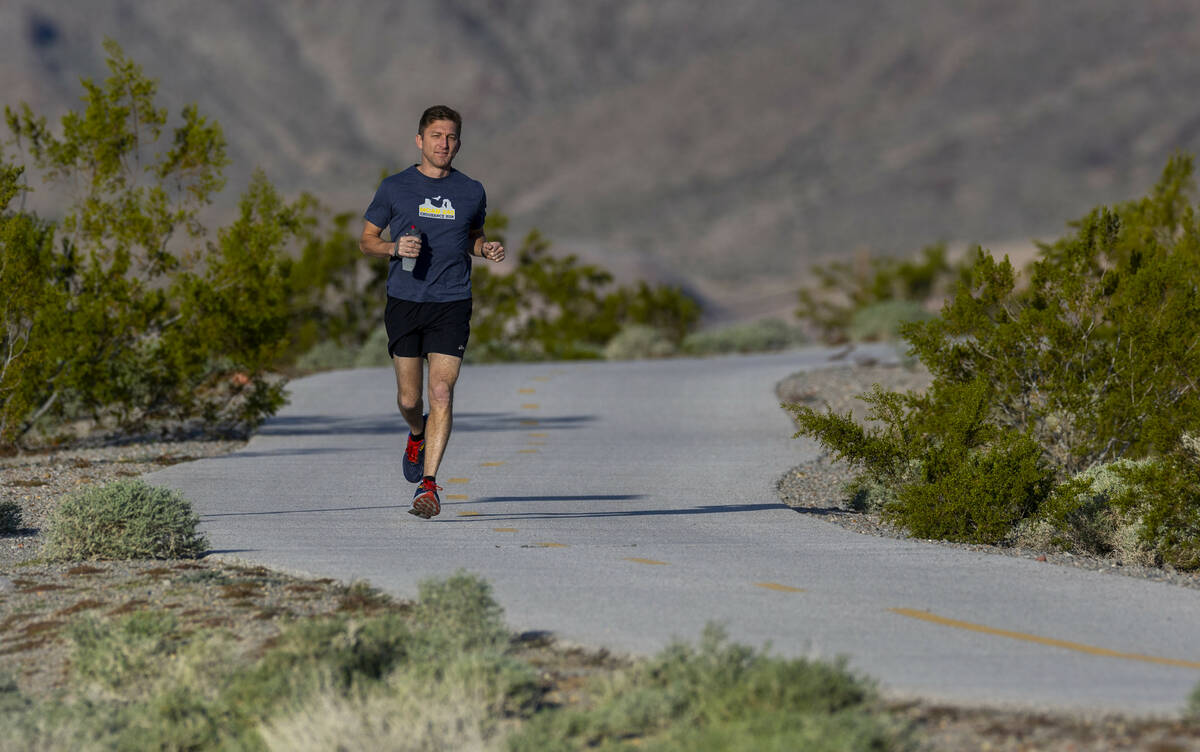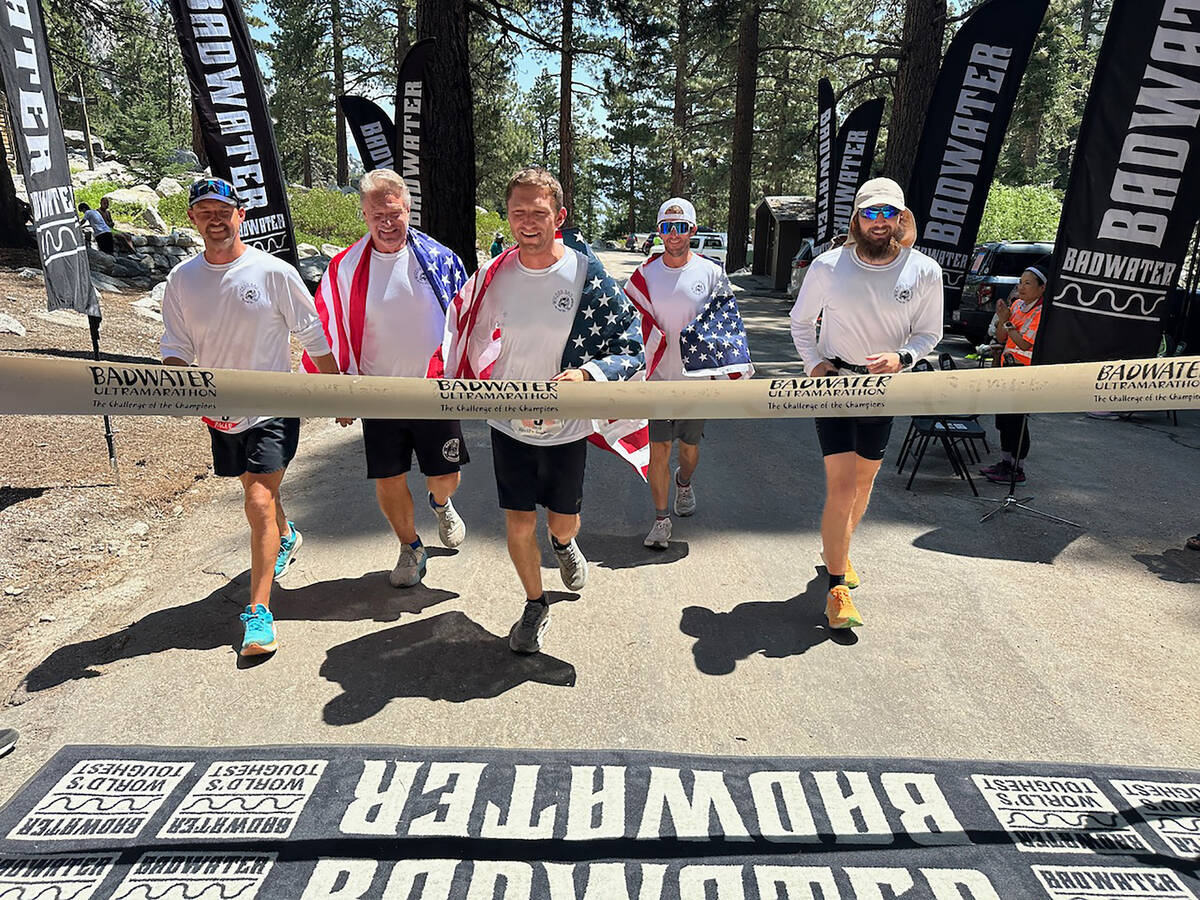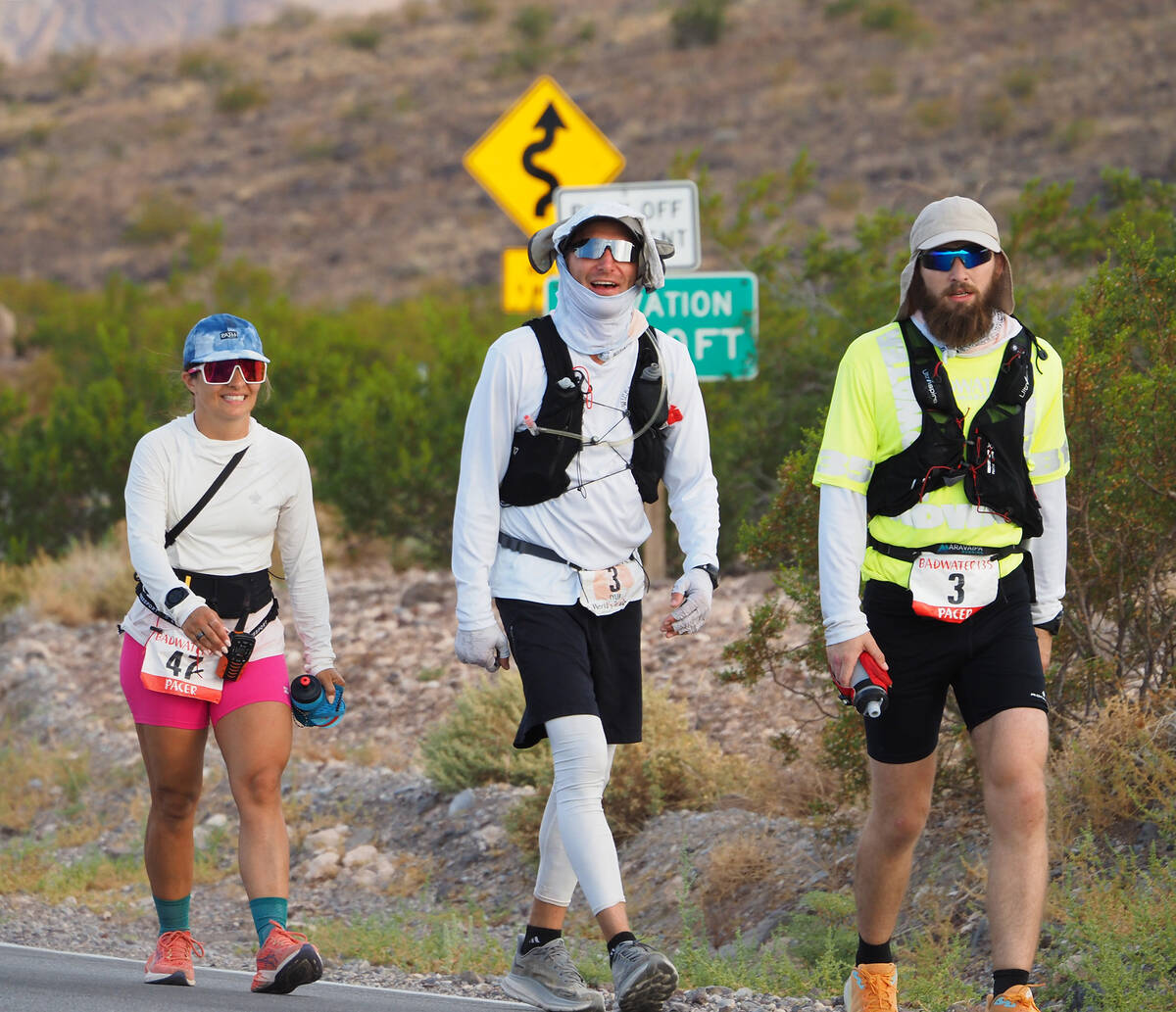‘I knew I was in trouble,’ runner says after surviving Death Valley race
In the ultramarathon world, it’s looked upon as the World Series, Super Bowl and a climb up Mount Everest all rolled into one.
The Badwater 135, which was held in late July in Death Valley, has the distance and almost temperature right in its name. Competitors have 48 hours to finish the race in one of the hottest areas of the world, and Boulder City’s Tyler Nash did just that.
But he admits, it wasn’t pretty. The 2005 Boulder City High School graduate had set a goal of finishing the 135 miles in 30 hours. He missed it by nine hours but still finished, nonetheless.
Nash believes it was the hottest start line in the race’s history as the mercury hit around 120 degrees. But adding to that was rain, which did not lower temperatures but rather increased humidity, along with gusting winds of 40 mph and thunderstorms.
“I said to myself, ‘For 15 years I’ve been dreaming of this race, and I’ve never once seen this in my head,’” he said of the conditions.
In a previous interview, Nash said a race like this has less to do with the physical preparedness as it does mental.
“There’s nothing like it, so you have to throw yourself in the deep end and hope you’re tough enough,” he said. “About 90 percent of this race is mental. You’ll have 100 reasons as to why you want to quit and just one reason to finish.”
During the run, he came close to hitting all 100 reasons to quit, but that wasn’t an option.
“Mentally I just told myself that this was perfect,” he thought sarcastically of the conditions. “Of course this is happening. Let’s make this race even harder. I felt now I really need to finish because the conditions helped make this an even better story.”
In preparing for the race, if that is even possible, Nash put in many miles in the Las Vegas heat, but the last week he “hunkered down” and did very little.
“At that point you just say, ‘The hay’s in the barn, let’s go,’” he said.
‘A ton of prep work’
He assembled several family members and friends, who served as his crew throughout the race. Runners have to bring their own ice, water, food and crew vehicle.
“Everyone has to be on the same page as far as what’s going to happen and what the goals are,” he said. “There’s a ton of prep work, which is very stressful. After 42 miles, you can have pacers run with you. I had a friend fly in from England who has done a ton of 200s and 100s (mile races). My cousin and Kyle (Boulder City’s Kyle Hammond, also an ultramarathoner) were also on my team. My dad was the crew chief, as he has done about 10, 100-mile races. So, it was quite the dream team. I put all my trust in them and put my life in their hands, and they didn’t disappoint.”
Despite his training, and his experienced pit crew, Nash experienced one of the scariest and most difficult times he’s ever faced in a race. It was around the 70-mile mark that he realized something was very wrong. It was around 120 degrees, and while running down a hill, he had ankle, stomach and nutrition problems. But that wasn’t the worst of it.
“My head felt like scrambled eggs,” he said. “I couldn’t really focus and had a hard time talking. When I did, I was slurring certain words and despite it being 120 degrees, I was freezing cold. I was deep into heatstroke. The guy I was walking with said, ‘You’re not doing well. You’re swaying all over the road, and you’re not really there.’”
Determined to finish
His crew quickly realized something was wrong, but in order to continue in the race, they had to shield Nash from the event’s medics, who have the ability to pull a runner from the race. They gave him water and eight salt pills while trying to lower his core body temperature.
“A lot of time that’s what takes people out of the race,” Nash said. “But within about two hours, I was feeling a little better and out on the trail again. I knew I was in trouble, but I couldn’t comprehend why things were going so bad. My crew kept telling me, ‘We’ll get you through this.’ Looking back now, that was a very scary moment for me.”
He said getting back on the course was crucial because the longer he rested, the greater the chance that his race was over. His cousin, Chris Collier, also had been chosen as one of the 100 competitors, and the two walked together for several miles until Nash felt better and continued the race. It was then he realized his goal of 30 hours was “out the window.” But he continued to power on.
“It beat me up pretty good,” he said, noting that he lost 10 pounds in two days. “We have a motto of EMS (Emergency Medical Services) before DNF (Did Not Finish). The latter wasn’t an option. We were finishing that race. It was amazing when I finished, but you don’t realize what your mind can get you through. I couldn’t believe I got through that (heatstroke) and got back out there, but I did.”
When one’s climbed Mount Everest, there’s nothing higher. For Nash, he said he does not know of anything that can top the Badwater 135. So, his goal now is to be chosen again to compete.
“I’ve got to do it faster,” he said. “I’ll have a huge advantage having done it and knowing what to expect. I feel top 10 is within my reach.”
Ron Eland is editor of the Boulder City Review. He can be reached at reland@bouldercityreview.com or at 702-586-9523.
























